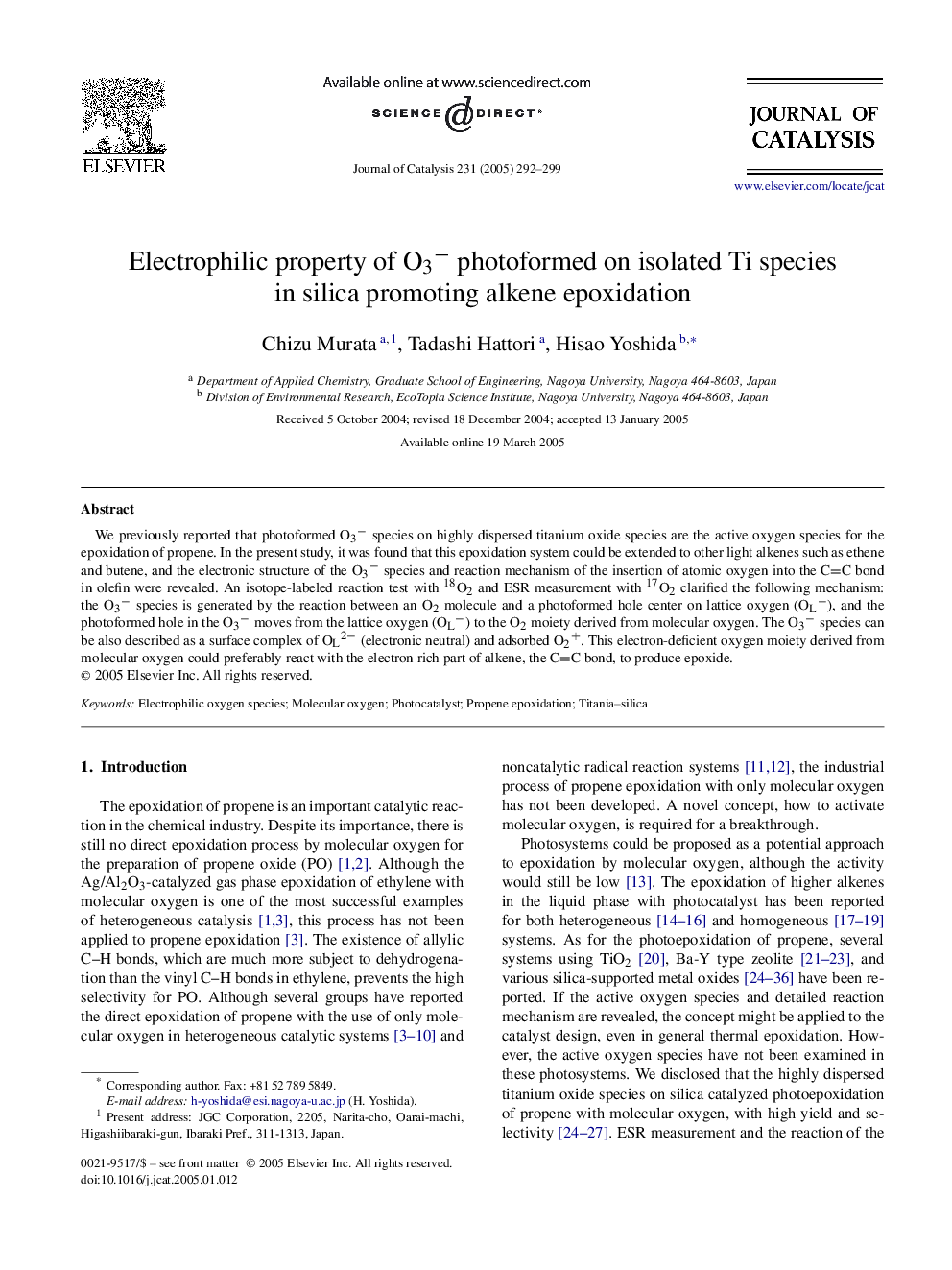| Article ID | Journal | Published Year | Pages | File Type |
|---|---|---|---|---|
| 10244605 | Journal of Catalysis | 2005 | 8 Pages |
Abstract
We previously reported that photoformed O3â species on highly dispersed titanium oxide species are the active oxygen species for the epoxidation of propene. In the present study, it was found that this epoxidation system could be extended to other light alkenes such as ethene and butene, and the electronic structure of the O3â species and reaction mechanism of the insertion of atomic oxygen into the CC bond in olefin were revealed. An isotope-labeled reaction test with 18O2 and ESR measurement with 17O2 clarified the following mechanism: the O3â species is generated by the reaction between an O2 molecule and a photoformed hole center on lattice oxygen (OLâ), and the photoformed hole in the O3â moves from the lattice oxygen (OLâ) to the O2 moiety derived from molecular oxygen. The O3â species can be also described as a surface complex of OL2â (electronic neutral) and adsorbed O2+. This electron-deficient oxygen moiety derived from molecular oxygen could preferably react with the electron rich part of alkene, the CC bond, to produce epoxide.
Related Topics
Physical Sciences and Engineering
Chemical Engineering
Catalysis
Authors
Chizu Murata, Tadashi Hattori, Hisao Yoshida,
